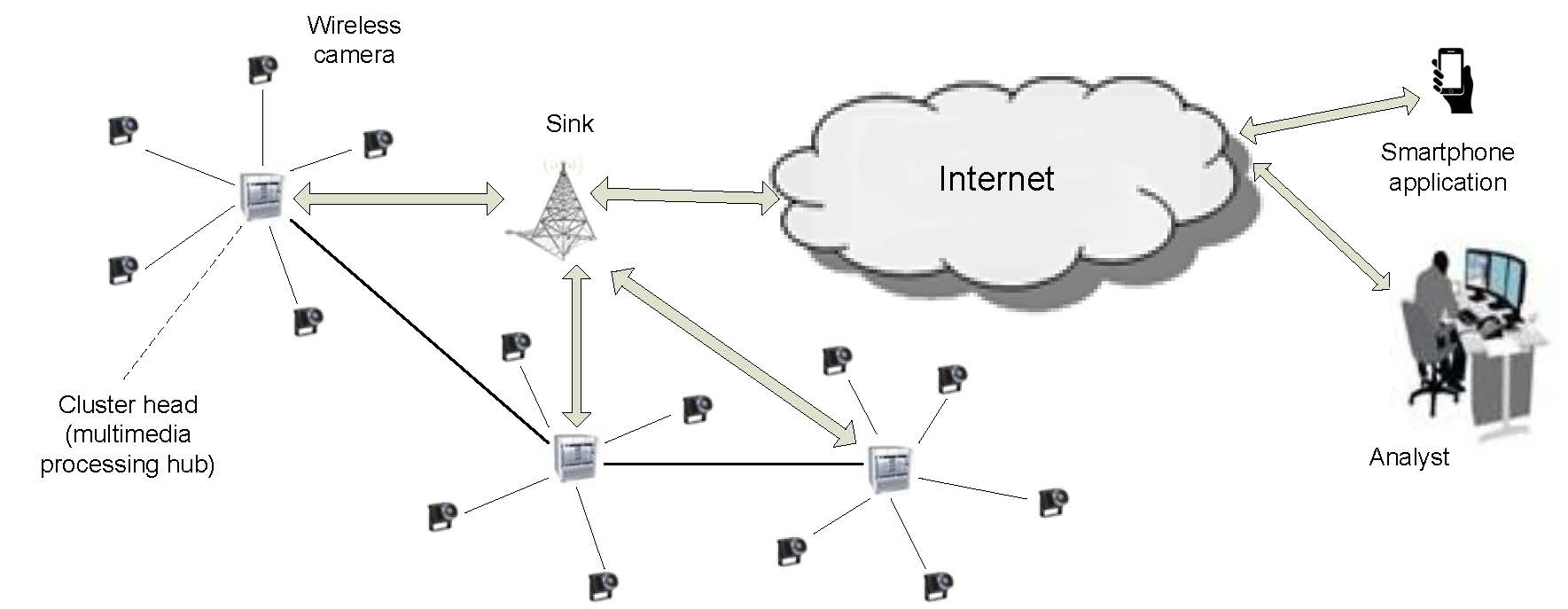Information-Driven Video Communication for Public Safety Networks
Information-Driven Video Communication for Public Safety Networks

Video surveillance systems have been used heavily in public safety for remote monitoring and various applications aiming at improving first responders’ situational awareness. In recent years more and more wireless cameras are deployed for video surveillance. Wireless surveillance cameras lower the deployment cost than wired solutions, enables mobility, and offers more rapid deployment in temporary venues such as disaster scenes and sports events. To achieve satisfactory coverage and observation quality for public safety use cases, there is an increasing demand of bandwidth for supporting large numbers of cameras and high video resolutions, which puts pressure on the wireless networking infrastructure. Automatic video analysis tools, which attempt to detect, recognize, track objects, and understand their behaviors, provide useful information to human operators in surveillance systems. Applying automatic video analysis at network edges (e.g., fog computing) will not only enable better real-time response to users but also alleviate the bandwidth pressure in wireless networks through selective transmission of meaningful video clips.
We will design an information-driven video communication framework for wireless-networked video surveillance systems in public safety. The overall goal is to maximize the information that human operators could gain from surveillance videos with the help of automatic video analysis. Our research plan consists of three major tasks. First, we will build analytical models for the quality of visual information obtained from automatic video analysis tools in networked surveillance systems. Second, we will design communication protocols to support efficient distributed in-network video analysis based on the analytical models. Third, we will design information-driven video communication protocols to effectively disseminate information extracted from surveillance cameras to human operators. Success of the proposed research will enhance first responders’ situational awareness and increase the speed and precision of decision making for various incidents in public safety.
Related Publications
- A. Ikusan and R. Dai, “Deep Feature Compression with Rate-Distortion Optimization for Networked Camera Systems”, ACM Multimedia Systems Conference, Jun. 2023. (acceptance rate: 27/114 = 23.7%)
- L. Kong, A. Ikusan, R. Dai, and D. Ros, "An Image Quality Adjustment Framework for Object Detection on Embedded Cameras", International Journal of Multimedia Data Engineering and Management (IJMDEM), vol. 12, issue. 3, pp. 39-57, 2021.
- A. Ikusan and R. Dai, “Rate-Distortion Optimized Hierarchical Deep Feature Compression”, IEEE International Conference on Multimedia and Expo (ICME), July 2021.
- L. Kong, A. Ikusan, R. Dai, and J. Zhu, "Blind Image Quality Prediction for Object Detection", to appear in IEEE International Conference on Multimedia Information Processing and Retrieval (IEEE MIPR 2019), Mar. 2019 (acceptance rate: 19.3%).
- L. Kong and R. Dai, "Efficient Video Encoding for Automatic Video Analysis in Distributed Wireless Surveillance Systems", ACM Transactions on Multimedia Computing Communications and Applications, Vol. 14, No. 3, Article 72, July 2018.
- L. Kong and R. Dai, "Object-Detection-Based Video Compression for Wireless Surveillance Systems", IEEE Multimedia, vol. 24, no. 2, pp. 76-85, April 2017.
- L. Kong and R. Dai, "Temporal-Fluctuation-Reduced Video Encoding for Object Detection in Wireless Surveillance Systems", IEEE International Symposium on Multimedia (ISM), Dec. 2016.
- L. Kong, R. Dai, and Y. Zhang, "A New Quality Model for Object Detection Using Compressed Videos", IEEE International Conference on Image Processing (ICIP), Sept. 2016.